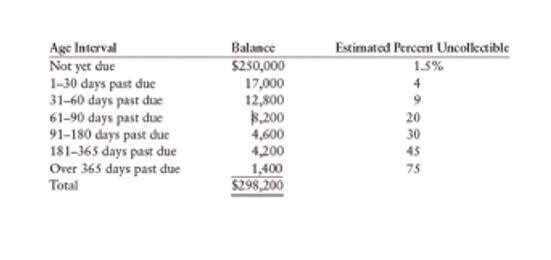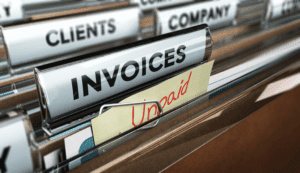The second is the retained earnings, which includes net earnings that have not been distributed to shareholders over the years. Stockholders’ equity can be calculated by subtracting the total liabilities of a business from total assets or as the sum of share capital and retained earnings minus treasury shares. It also reflects a company’s dividend policy by showing its decision to pay profits earned as dividends to shareholders or reinvest the profits back into the company. On the balance sheet, shareholders’ equity is broken up into three items – common shares, preferred shares, and retained earnings. The stockholder’s equity can be calculated by deducting the total liabilities from the company’s total assets. In other words, the Shareholder’s equity formula finds the net value of a business or the amount that the shareholders can claim if the company’s assets are liquidated, and its debts are repaid.
- The equity capital/stockholders’ equity can also be viewed as a company’s net assets.
- By subtracting the company’s obligations from its assets for that fiscal year, the shareholders equity will be determined.
- If it’s in the black, then the company’s assets are more than its liabilities.
- Note, however, that share buybacks reduce the company’s cash reserves because the company taps its own cash reserves or takes on debt to repurchase its shares.
On average, lenders expect you to have at least 20% equity in your home before applying for a home equity loan or HELOC. Your ability to access your home equity will depend on your down payment amount, home values in your area, and any upgrades you make to your home. Once these expenses are paid, you’ll receive the remaining profits which you can use toward anything else. If you have negative equity in your home due to missed payments, you may face foreclosure.
As an Investopedia fact checker since 2020, he has validated over 1,100 articles on a wide range of financial and investment topics.
Current liabilities are debts typically due for repayment within one year, including accounts payable and taxes payable. Long-term liabilities are obligations that are due for repayment in periods longer than one year, such as bonds payable, leases, and pension obligations. For this reason, many how to calculate shareholders equity investors think it’s risky or unsafe to invest in companies with low shareholder equity. You cannot always determine a company’s financial health by shareholder equity alone.
Shareholders Equity (Definition, Equation, Ratios, Examples)
The stockholder’s equity is available as a line item in the balance sheet of a company or a firm. The company’s stockholders are usually interested in the stockholder’s equity, and they are concerned about the company’s earnings. Further, the Shareholder’s purchase of company stock over a period gives them the right to vote in the board of directors elections and yields capital gains for them.
- However, financial distress is not always indicated by low or negative shareholders equity.
- Stockholders’ equity is the remaining assets available to shareholders after all liabilities are paid.
- Thus far, we have learned that ROE measures how efficiently a company is generating its profits.
- The first formula (Assets – Liabilities) calculates SE as a residual value.
The value of capital assets and property, including patents, structures, machinery, and notes receivable, are considered long-term assets. It’s significant to note that certain assets, such as fixed assets, do not have their recorded values increased to reflect rises in market value. A dividend payable account is used by the corporation to record the obligation to pay a dividend once it is declared by the board.
Retained earnings are also a component of shareholder equity, as mentioned above. It is crucial to distinguish retained earnings from cash and other liquid assets. This is because retained earnings over the years could be used for either expenses or any asset kind to expand the company. Using any of the above shareholders equity equations will allow you to ascertain the value of a company’s shareholders equity on its balance sheet. In other words, shareholders equity is the total asset of a company minus its total liabilities. In accounting for share-related transactions, a few more phrases are crucial.
By deducting each common or preference share’s par value from the price it was sold for, the owners’ equity portion for this is calculated. The additional paid-in capital is only considered when an investor buys their shares directly from a company. If you consider total equity from a book value perspective, then total equity (book value) can be equal to total shareholder equity expressed in book value on a company’s balance sheet. It represents the amount a company has received in cash or value from issuing common shares to equity investors. Equity investors can calculate the return generated by the company on their equity investment using the return on equity ratio (ROE).
How do company valuations work?
Preferred stock, common stock, retained earnings, and accumulated other comprehensive income are all included in shareholders’ equity. You must add long-term assets to current assets to get the total assets for this equity formula. When reviewing financial statements, information from shareholders equity is quite helpful. In liquidation situations, stock holders are paid last in line after debt holders. Retained earnings represent the cumulative net income of a corporation that has been retained rather than distributed to shareholders as dividends. These earnings are reinvested in the business to expand operations, purchase new equipment, or pay off debt.
Determine the company’s shareholder equity based on the provided information. Preferred stock is a unique form of company ownership that combines elements of both stocks and bonds. Unlike common stock, preferred shares typically offer fixed dividend payments that are paid out before dividends to common shareholders.
Due Diligence Period (Explained: All You Need To Know)
To compute total liabilities for this equity formula, add the current liabilities such as accounts payable and short-term debts and long-term liabilities such as bonds payable and notes. Shareholder equity (SE) is a company’s net worth and it is equal to the total dollar amount that would be returned to the shareholders if the company must be liquidated and all its debts are paid off. Thus, shareholder equity is equal to a company’s total assets minus its total liabilities. The shareholders equity ratio measures the proportion of a company’s total equity to its total assets on its balance sheet. Debt-to-equity ratio or D/E ratio is calculated by dividing the company’s total liabilities by the shareholders’ equity.
Common shareholders’ equity
Alternatively, email editorial-team (at) simplywallst.com.This article by Simply Wall St is general in nature. We provide commentary based on historical data and analyst forecasts only using an unbiased methodology and our articles are not intended to be financial advice. It does not constitute a recommendation to buy or sell any stock, and does not take account of your objectives, or your financial situation. Note that our analysis may not factor in the latest price-sensitive company announcements or qualitative material. Let’s look at an example of shareholders equity with some real-life numbers. This is the sum that remains for the benefit of the company’s shareholders after all liabilities have been subtracted from the assets.
It represents the residual interest in the assets of a company after deducting liabilities. Stock buybacks, also known as share repurchases, involve a company purchasing its own outstanding shares from the market. MVE is driven by investor sentiment, expectations of future earnings, and overall market conditions. As a result, MVE can differ significantly from BVE, especially for companies with strong brand recognition or high growth potential in industries like technology or pharmaceuticals.
By extracting the total assets and liabilities information from a company’s financial statements, you can calculate shareholders equity. Using the return on equity ratio, equity investors can determine the return the company made on their equity investment (ROE). In essence, a company’s net income is divided by the equity of its shareholders to calculate its return on equity. The value of the common shares on a company’s balance sheet is known as the common shareholders equity. It shows how much money or value a business has made by selling common shares to equity investors.
Consider this actual balance sheet for Bank of America Corporation (BAC), taken from their 2023 annual report. The numbers for total assets and total liabilities are $3.18 trillion and $2.88 trillion, respectively. The equity capital/stockholders’ equity can also be viewed as a company’s net assets. You can calculate this by subtracting the total assets from the total liabilities.
What are the components of shareholders’ equity
Preferred stocks and preferred shares refer to the same thing—they are interchangeable terms. Common stockholders have a claim on the company’s profits through dividends, although these are not guaranteed and are paid at the discretion of the board of directors. Long-term liabilities are obligations that are due for repayment over periods longer than one year. Companies may have bonds payable, leases, and pension obligations under this category.
Let’s see some simple to advanced examples to better understand the stockholder’s equity equation calculation. In recent years, more companies have been increasingly inclined to participate in share buyback programs, rather than issuing dividends. Stockholders’ equity is also referred to as shareholders’ or owners’ equity.

.jpg)
.jpg)








